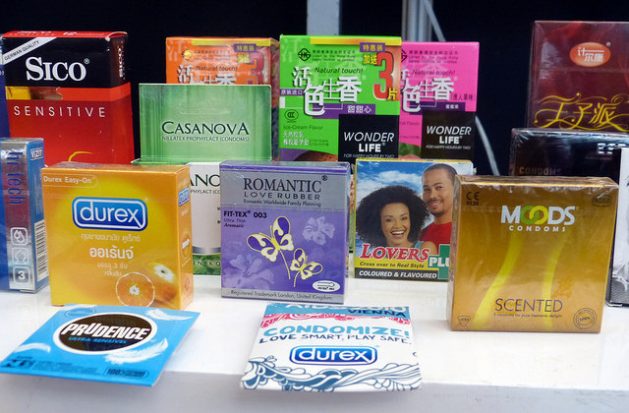UNITED NATIONS, Mar 1 2019 (IPS) – In light of rates of sexually transmitted infections (STIs) and unintended pregnancies, governments are exploring ways to tackle taboos around condoms.
In a new study, the UN Population Fund (UNFPA) reviews the availability and accessibility of condoms, hoping to dismantle potentially harmful misconceptions.
“Many countries want to implement [CAP], but they are very anxious because they will be asked where the evidence is,” UNFPA’s senior HIV prevention advisor Bidia Deperthes told IPS.
“We don’t put enough money to really understand the behavior and to have this study that can really guide us and put condoms in places where people really need them…the condoms in terms of volumes seems to be out there, but are they really reaching the people who need to use them?” she added.
Increasingly, it is youth that need them the most.
According to the UN Children’s Fund, HIV rates among adolescents and young people aged 15-19 are rising. In 2016 alone, 260,000 young people of the same age were newly infected with HIV.
With a new generation who did not face the HIV epidemic in the 1980s and 1990s, Eda Algur, who headed the research, pointed to the importance of condoms.
“Because of things like pre-exposure prophylaxis (PrEP) and the fact that we have so many medications for [HIV], it may be less on people’s minds,” she told IPS.
“Rates are going down in all other age groups but teenagers of high school age are particularly at risk in 2019. It should be a main concern and a main reason for advocating for condoms,” Algur added.
Beyond HIV, more than 1 million STIs are acquired everyday worldwide with the second highest rate occurring among 15-19 year olds.
However, a majority of adolescents do not have access to any adequate or affordable STI services.
While male condoms are among the most effective methods against HIV and STIs, misconceptions around contraception have resulted in backlash.
“The contention comes from a lot of civil society and parents and students voicing concerns that making condoms available would kind of be a green light for students—almost telling them that it is ok to have sex,” Algur said.
Deperthes echoed similar sentiments, noting that governments also shy away despite the statistics.
For instance, when countries such as the Philippines and South Africa considered implementing condom availability programs (CAP) in secondary schools, communities pushed back, noting that it will promote students to initiate sex.
UNFPA also found that opponents of CAP believe such programs will increase promiscuity and sexual activity among students as well as adopt other risky sexual behaviors.
“This stems from view of condoms as a device for sex, rather than for protection during sex,” the study states.
However, upon reviewing existing research across seven countries, UNFPA observed that such fears are unfounded.
Data overwhelming show that CAP does not increase sexual activity nor does it lead to more sexual partners.
Rather, CAP has lead to an increase in condom acquisition and use, suggesting safer sex among students.
In fact, some were up to three times more likely to acquire condoms with CAP than without.
All studies also found a decrease in STI rates for students with CAP compared to those without.
In New York City, CAP has been implemented since the early 1990s, largely as a result of the HIV epidemic in the 1980s and 1990s. Similar programs can be seen across the United States, and it has led to a decrease in risk of HIV infection.
Surveys also showed that a majority of students and parents believed CAP would not increase sexual activity, and 60 percent of parents in one study thought that condoms should be made available in high schools.
While condom use has generally increased over recent decades, there is still a gap between availability and need in sub-Saharan Africa. In 47 countries in the region, the estimated male condom need in 2015 was 6 billion but only approximately 3 billion were distributed.
Algur highlighted the effectiveness of CAP, especially when combined with comprehensive sexuality education.
Two studies revealed that combining CAP with sex education programs resulted in the greatest uptake of condoms.
But the lack of published data on the subject is a missed opportunity for countries to understand and tailor programs.
“I think this study showed us that there is a real value to evaluating these programs when they exist…by presenting in that fashion that this is a program worth investing money into because it does have a positive outcome on students’ health will be the way to go,” Algur told IPS.
Deperthes stressed the need to be inclusive, starting with the parents who must be involved at every step of the way in order to ensure the success and effectiveness of such programs.
“You educate them, you advocate them, you show them the data—they will be your partners, not opponents. If you don’t do that, then of course it will backfire,” Deperthes said.




